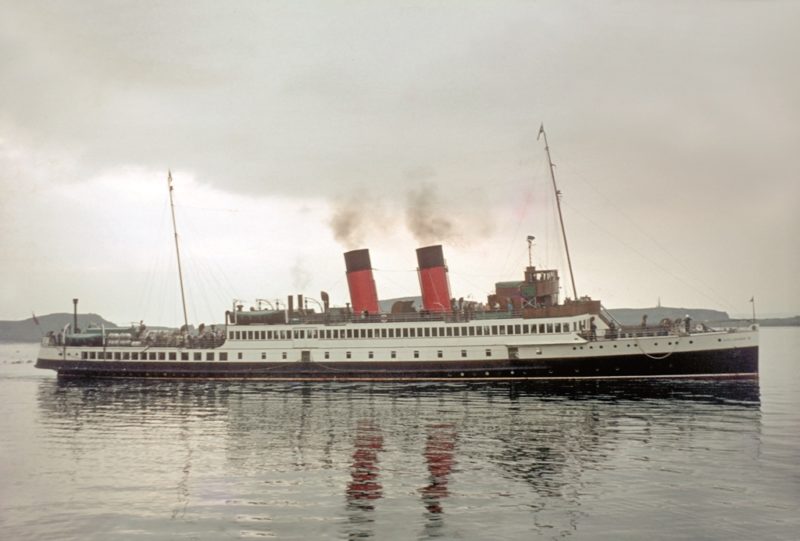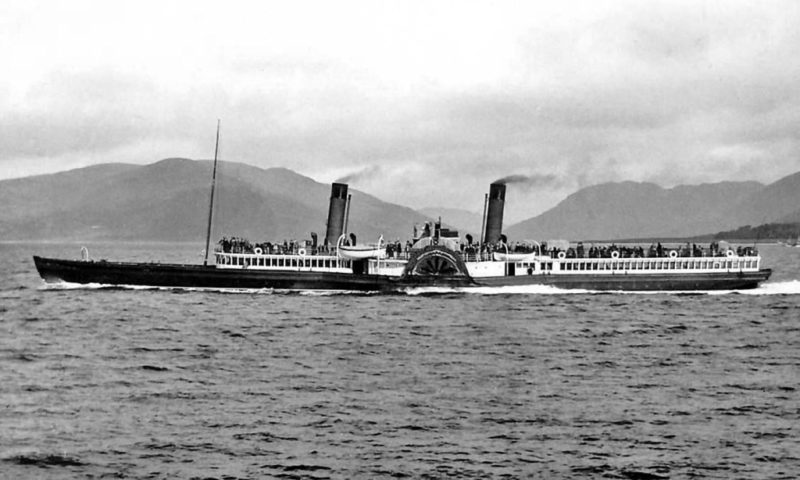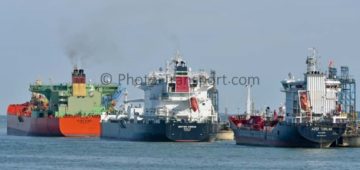
Part 1: David MacBrayne 1985 to 1973
The magnificent scenery of lochs and bays and the grandeur of the many mountains in the Western Isles led travellers to visit and settle over the centuries. The travellers on the early steamers in the first decades of the 19th century across The Minch to the Outer Hebrides fell into two groups. In terms of status, members of the first group comprised the Macleod clan of Dunvegan Castle in north west Skye and on Harris, and the Macdonald ‘Lord of the Isles’ clan with a base at Sleat on Skye. The Macdonald clan had controlled most of the North Minch basin since the 16th century, with many feuds with the Macleod clan, and their tenants of large rented farms were numerous. The second group of travellers included seafarers, fishermen, shepherds, farm workers, blacksmiths, herdsmen, bailiffs, bakers, stockmen, drovers, gillies (gamekeepers), kelp workers, teachers, ministers, doctors and nurses.
One of the more famous members of the Macdonald clan was Flora Macdonald (1722 -1790), who was visiting Benbecula in the Outer Hebrides when Bonnie Prince Charlie and a small group of aides took refuge there after the Jacobite Rebellion of 1745 and the Battle of Culloden in June 1746. Flora’s stepfather Hugh Macdonald controlled the pro-Government militia on Benbecula, and she was able to obtain the necessary permits to travel to Skye for herself, a boat crew of six men and two women servants, one of whom was Prince Charles in disguise, to land at Kilbride near Uig on Skye on 27th June 1746. The ‘Skye Boat Song’ relates to this passage across The Minch, and on the next day Prince Charles was taken from Portree to the Isle of Raasay, and thus evaded the many Government troops who were searching for him on Skye. He made good his escape on the French frigate L’Heureux and arrived in France in early September 1746.

One of the more famous members of the Macleod clan was Iain Macleod (1913-1970), who died while holding the high office of Chancellor of the Exchequer. He belonged to a branch of the Macleod clan of Pabbay and Uig on Skye and after graduating from university he became first a professional bridge player, and then a Member of Parliament in 1950. He worked in the Foreign Office as a Cabinet Minister and later was Minister of Health, Colonial Secretary (1959-1961) as well as Chairman of the Conservative Party (1961-1963). He is remembered for his colonial work and was the prime mover in the movement to grant independence to many British colonies in Africa in the 1960s, as he recognised the fervour of the wish for independence in Africa and thus saved the lives of many British troops who would have died defending the colonies during this period of upheaval. Dunvegan Castle was first built in the 13th century and developed piecemeal over the centuries, but it actually dates from the 19th century when it was remodelled as a ‘mock medieval’ castle, and it was opened to the public in 1933 with great views over Loch Dunvegan.
The first early wooden paddle steamer that went ‘All the Way to Stornoway’ from Glasgow was the Ben Nevis of 45 grt in 1828, sailing on alternate Tuesdays from Glasgow and using the Crinan Canal, with other small steamers on scheduled services as far as Skye. The steamer Mary Jane of 226 grt and overall length of 150 feet was a better seaboat to Stornoway when she was completed in 1846. She reached Stornoway from Glasgow in a little over 26 hours under Capt. R. H. Hudson in June 1846, and then undertook an excursion from Stornoway to show off her fine lines. The larger wooden paddle steamer Marquis of Stafford completed in 1849 operated mostly to Stornoway from Poolewe on the mainland in place of sailing ships.


DAVID MACBRAYNE
Subscribe today to read the full article!
Simply click below to subscribe and not only read the full article instantly, but gain unparalleled access to the specialist magazine for shipping enthusiasts.




Comments
Sorry, comments are closed for this item